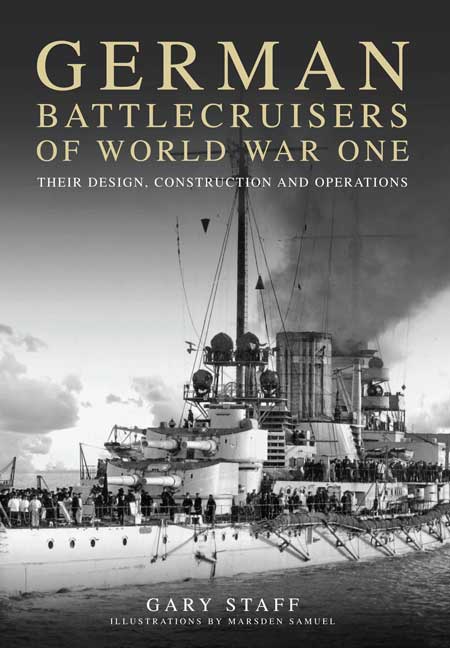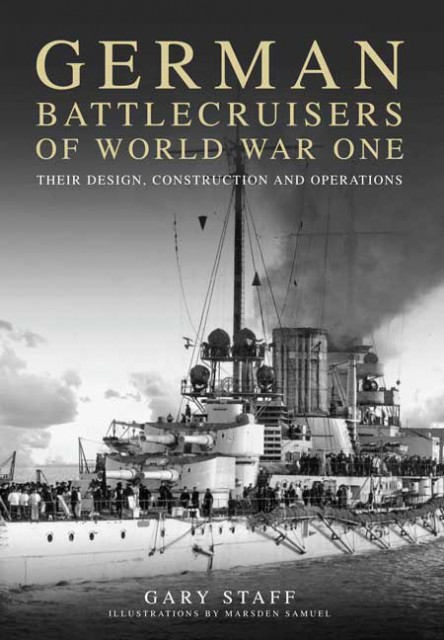We can read a lot about Kaiser Wilhem II and his burning ambition to make Germany a first rank imperial power to match the empires of the dynastic royal relatives he hated so much. To make it happen Germany’s industrial surge was something to marvel at in an age when British dominance was already faltering and the United States had yet to really make an impact. But the Kaiser wanted more and more and the one thing he craved was a navy to match the supremacy of his English cousins. The great arms race that ensued is legendary; best illustrated by the appearance of HMS Dreadnought, the game changer built in just a year when British shipbuilding was at its zenith.
The Kaiser got his navy at the cost of huge expense in treasure but it was built on a foundation of quality engineering and innovation. The new navy lacked the traditions and history of its principal rival, but the Germans wasted no time in creating a massive threat to British naval dominance. Once the spark was lit in 1914 the two giants would shadow box and make the occasional jab, before the day, Der Tag,finally happened with the clash of the titans in May 1916 at what the British call The Battle of Jutland and in Germany they remember it as the Skagerrak Battle.
Battleships and battlecruisers may look outwardly similar to the untrained eye, but they are very different animals; built out of a need to ensure brute strength and speed topropel the reach of sea power. Battlecruisers were built for speed, being somewhere between the mighty battleships the Dreadnought sired and the sleek cruisers traditionally used to range the world showing the flag and making their presence felt.
History tells us that the British battlecruisers had a sorry time at Jutland. Weaknesses in the discipline of ammunition handling and poorer methods of damage control contributed to the loss of fine ships. The German panzerkreuzers took a hammering, but losses were lessened by better discipline in those crucial areas. Debate about Jutland will go on forever. In simplistic terms of numbers the British lost more ships over those dramatic two days; but the Germans lost the tactical and strategic battle and this mattered much more.
For the British it was a case of what might have been. A little more good fortune and the German High Seas Fleet would have been open to near total destruction by Jellicoe’s Grand Fleet. Instead the vast part of the Kaiser’s fleet was destined to end up as scrap, raised from the depths of Scapa Flow where they were scuttled in June 1919.
There were other encounters and here in Britain we are close to the centenary of the bombardment of the east coast towns by the Germans, which caused so much shock and disbelief in 1914. The photographs of damaged buildings from that time display an innocencein those early months of the war which would soon disappear. While there remains an element of romance in the naval battles of those times, the combat was always bloody and quite often terrifying for the people who experienced it. So much of WW1 history focuses on the trenches, but the war at sea was often an immense struggle to match it in terms of drama and tragedy.
This fantastic book by Gary Staff meets the immensely high standards of Seaforth naval publications. It follows the development, construction and service lives of the panzerkreuzer fleet and is completed by a look at the ships that were never finished or didn’t make it beyond design concepts. There is much detail enhanced by a vast array of archive photography and drawings. Marsden Samuel’s illustrations are very impressive and offer us a chance to look at these mighty ships in detail.
Once again, we have a book you can dip in and out of. It certainly isn’t one for your commute by bus or train, being far too weighty for that purpose. But in tandem with the outstanding naval books from Seaforth we have already reviewed on WHO it adds an significant amount to our knowledge and I cannot fault it. I love these books and will be revisiting this one time and again. The German ships had a beauty to them and like their British counterparts it is a shame there is so little of them left to see. I made a trip to the Orkneys many years ago and there was so little of the huge German fleet that scuttled itself
in Scapa Flow to see. This book will allow you to get much closer to some of those ships and you, too, can marvel at the their power and maybe even a little of the glory. Awesome stuff.
Reviewed by Mark Barnes for War History Online.
GERMAN BATTLECRUISERS OF WORLD WAR ONE
Their Design, Construction and Operations.
By Gary Staff
Illustrations by Marsden Samuel
Seaforth Publishing
ISBN: 978 1 84832 213 4

